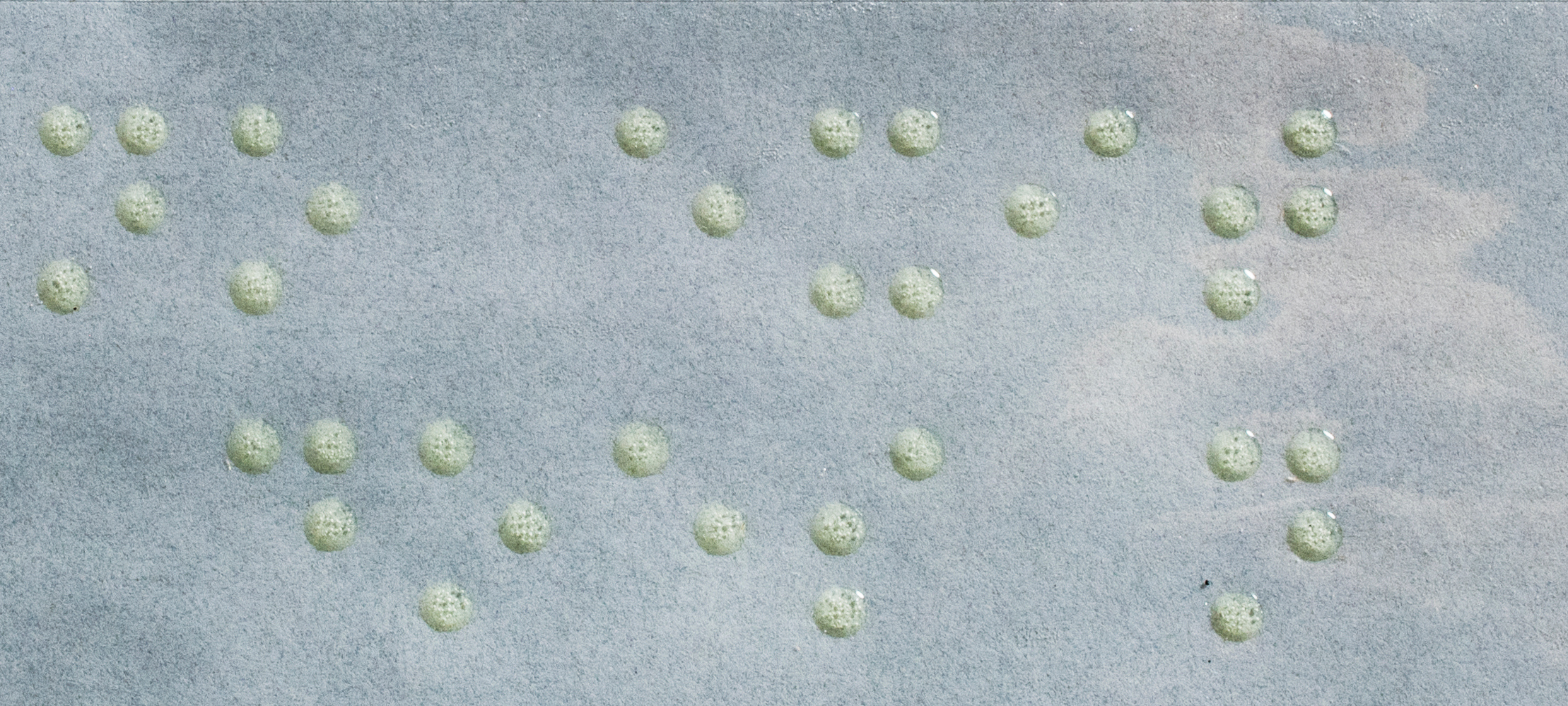Braille and Tactile Custom Labels
For a Feel of Vision
Make your products user-friendly for the visually challenged with Braille and raised characters. This sizeable market includes approximately 10 million people in the U.S. and 7 million people in Europe. People who are blind read Braille by tracing the pattern of solid, raised dots with their fingers. We can apply the dots with our UV rotary, screen printing process.
Screen Printing Braille with Specialized Screen Printing Plates
We use specialized screen printing plates that were developed especially for Braille. This screen printing plate features a strong, raised photopolymer layer for dots up to 260 microns. UV rays cure the special transparent varnish coating. The Braille prints directly onto the label without changing the layout. The dots and symbols adhere extremely well to the substrate. These screen plates make it easy for the blind and partially sighted to “read” the message.
UV Screen Printing vs. Embossing
Rotary screen printing complements embossing. To some extent, embossing compromises either functionality or quality. If the embossing is too high, bursting may occur, which compromises the tactile quality. If using a short-fiber card, dots can burst at the low embossing height.
Interested in finding out more? Read on or give us a call at 773.775.1000 to speak with a Braille label expert.

Benefits
Accessibility
Allow the visually impaired to access information, products, services, and to help them navigate public spaces by marking elevators, restrooms, and public transportation
Promote Inclusivity
Provide equal access to products, services, and information
Legal & Regulatory Compliance
Braille labels are often required by law or industry standards to ensure accessibility for visually impaired individuals.
Identify Products
Braille labels can help visually impaired individuals identify products, brands, or specific models
Accuracy
Provide accurate, clear, and consistent information for the visually impaired across all products and services using labels adhering to the standard Braille code
Improve Safety
Can help the visually impaired read safety warnings and instructions on products
Versatility
Braille can print directly onto a label without changing the layout
Gallas Uses UV Rotary Screen Printing for
Kellogg’s Rice Krispie’s “Love Notes” Campaign
Additional Links
Industries Served
Braille labels are used in a variety of industries to make products and services more accessible to people who are visually impaired. Some key examples are healthcare, pharmaceuticals, consumer services such as electronics and financial services, government buildings, transportation and public spaces, and finally, food and beverage.
Read on to find out more about how Braille labels are used in different industries. If you don’t see your industry to the right, contact us to find out how Braille labels can benefit your business.
Healthcare & Pharmaceuticals
Braille labels allow visually impaired individuals to read medication labels. They also help visually impaired people operate medical devices such as blood glucose meters or inhalers correctly.
Electronics & Technology
Some manufacturers include Braille labels on devices and on remote control buttons to help visually impaired users identify different functions.
Government
Apply Braille labels to elevator buttons and public transportation signs to indicate floor numbers, destinations, and other important information.
Food & Beverage
Some food and beverage companies include Braille labels on their products, especially those commonly used in households. This can include items like condiments, spices, packaged meals and more.
Get a Quote
All Fields Required



